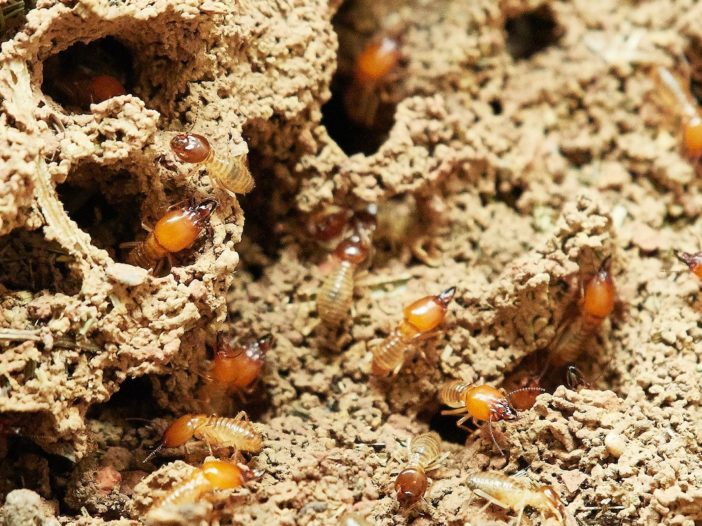
You’ve seen the cartoon–unsuspecting person sits in a chair and suddenly a swirling mass surrounds the chair legs and, to the background sound of a buzz saw, demolishes the legs landing the person on the floor. Hilarious, unless it happens to you.
Termites, while not quite as quick or sudden as the cartoon version, can cause all kinds of damage and it’s no laughing matter. Learning what you’re dealing with and how to stop them in their tracks can help preserve your home and property.
Termite Species
There are three main types of termites: drywood, dampwood, and the most common in the Pacific Northwest, subterranean.
Drywood termites, as the name implies, live in wood like dead trees or your hardwood floors. They have small colonies which is really the only reason they aren’t as damaging as some other types. They can still wreak havoc on a home, they just do it at a slower pace because there are fewer of them.
Dampwood termites, you guessed it, live in wood that is moist, meaning, thankfully, they don’t usually live in man-made structures like your house. If you do find these in your home you probably have an even bigger problem than just termites.
The main culprit, the ones that come to mind when you hear of termites, are the subterranean. These pests live in moist soil so basically they can live anywhere in our part of the country. They build mud tubes to get to their food source–wood cellulose as found in trees, your fence, the structure that is your house.
Subterranean Termite Habits
Unlike the other varieties who leave behind their calling card in the form of piles of sawdust, the subterranean is stealthy, using the wood particles from its boring activities to make a sort of plaster that they use to construct tunnels. And while all termites live in colonies, because the subterranean species are skilled tunnel builders, they can have several colonies with the main one on the ground and several satellite nests above ground. Their ideal scenario is to have a nest in the damp ground that abuts the wooden trim or cladding on your home offering the perfect point of entry to eating through your house.
Identify and Eradicate
Once inside, nothing will make them happier than finding a moist area of wood that may stem from dripping plumbing or leaky roofs or other maintenance items that you thought you could delay. They can tunnel through the wooden structure of a building and completely destroy it, literally, from the ground up.
Do not despair. If you start to notice little mudhills around the perimeter of your building, and a close inspection of nearby wood shows jagged edges, a rough appearance, or even more telling, a honeycomb appearance, you likely have a problem. But you can contact Northwest Pest to help. We will eradicate your termite population and help ensure they never return.